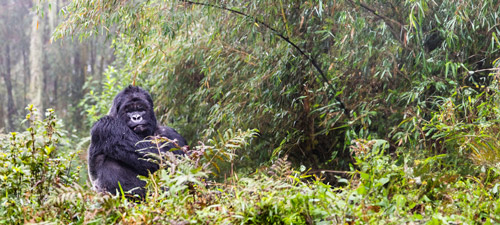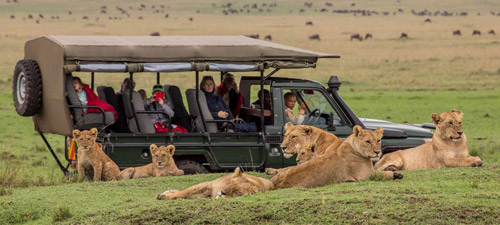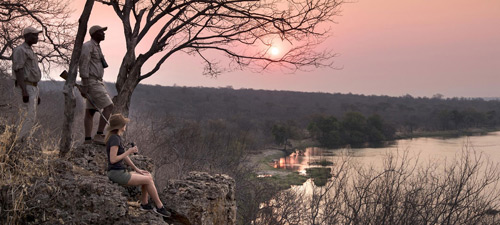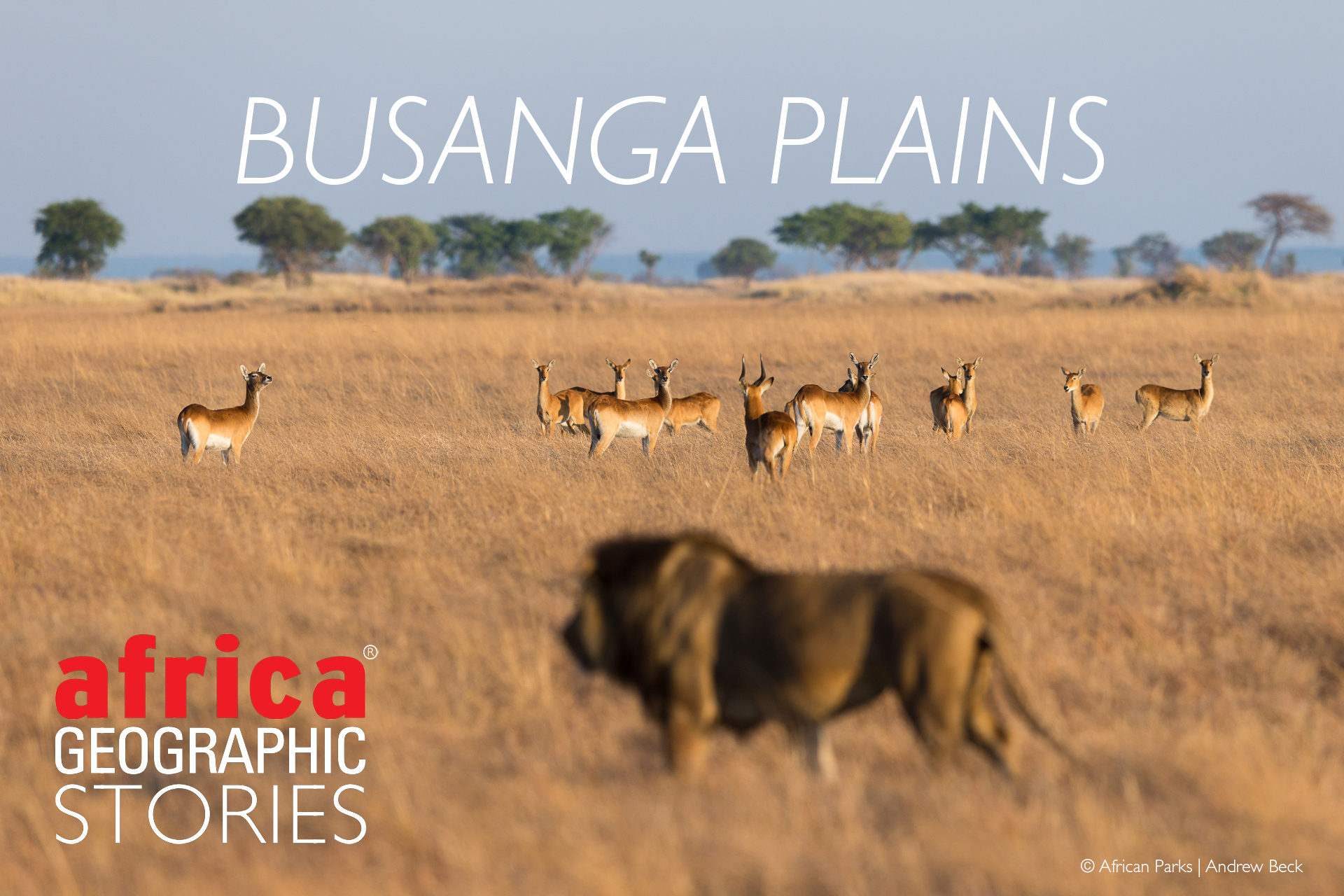
Lions, lechwes & endless horizons

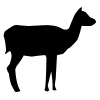
For just five months of the year, the flood waters on the Busanga Plains recede, and one of Zambia’s best-kept secret wildlife spots is accessible to explore. The vast, fertile grasslands of Busanga Plains are renowned for their concentrations of animals and are the northern jewel of Zambia’s Kafue National Park. This seasonal wetland ecosystem is known for its diversity of antelope species and large lion prides.
Busanga Plains lies in the northern tip of the Kafue National Park – Zambia’s oldest national park and one of the largest in Africa. The plains are part of an ancient lake bed that floods during the rainy season. This wild wetland is home to red lechwe that leap across the shallow channels, lions that hunt in the golden grasses, and elephants that emerge majestically from the early morning mist.
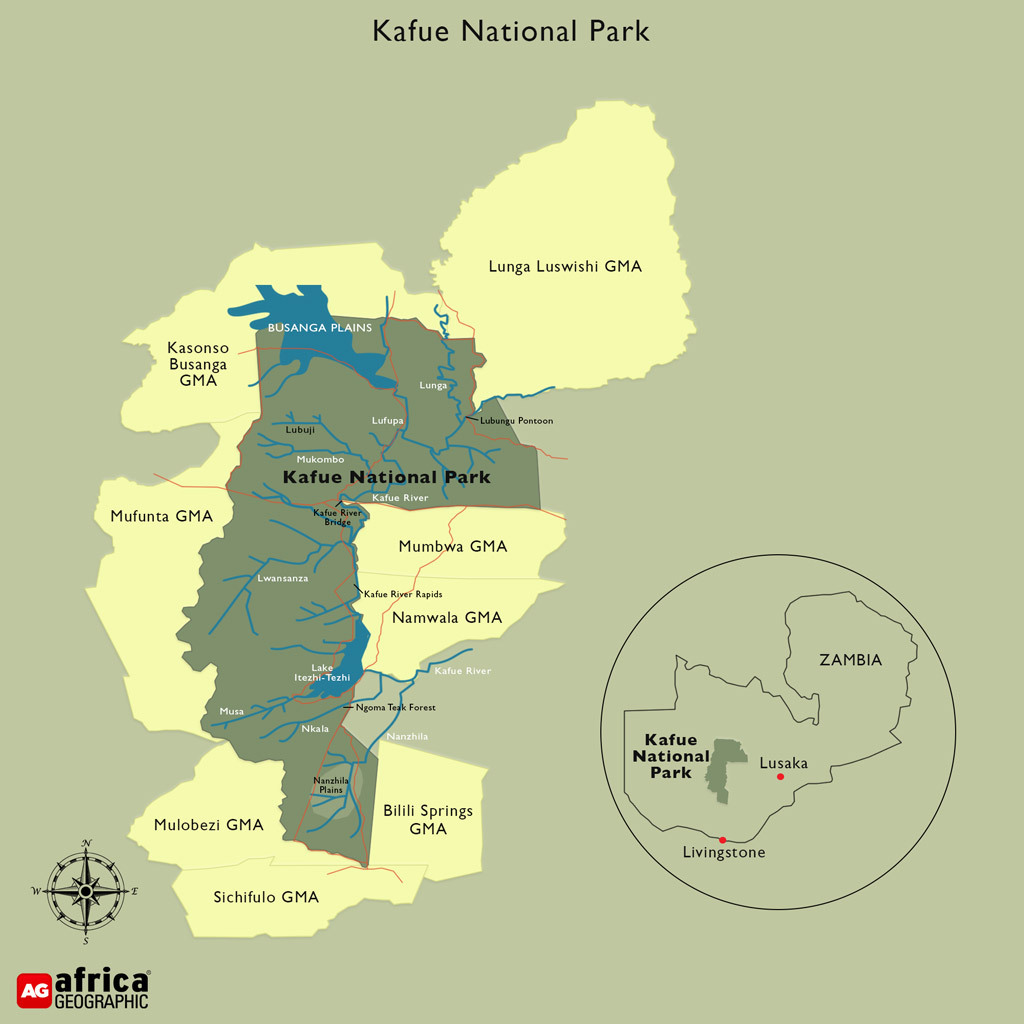
The Lufupa River, a Kafue River tributary, sustains these expansive plains that stretch out for around 720km² (72,000 hectares). Distinct from the rest of Kafue’s miombo woodland, the flat grasslands are dotted with date palms and sausage and fig trees. In summer, the plains flood, leaving only a sprinkling of scattered, elevated islands. In winter, the flood waters recede, revealing a swaying sea of yellowing grass cut through by a network of narrow channels. This mosaic of grasslands attracts herbivores in their thousands.
Busanga Plains is an official Ramsar-recognised wetland system that supports a wide variety of wildlife.
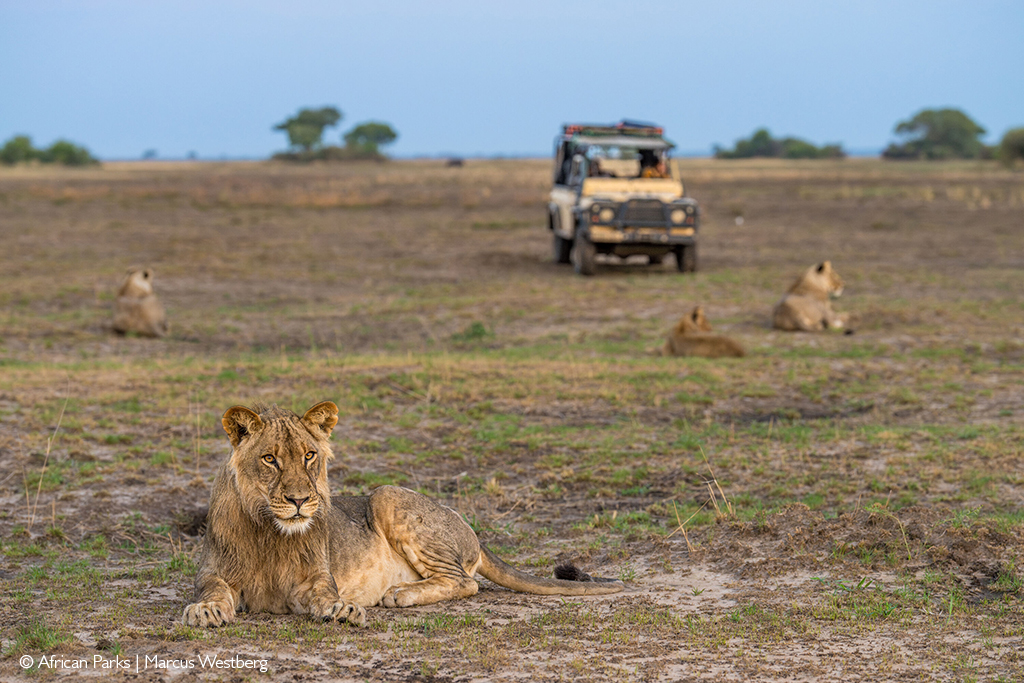
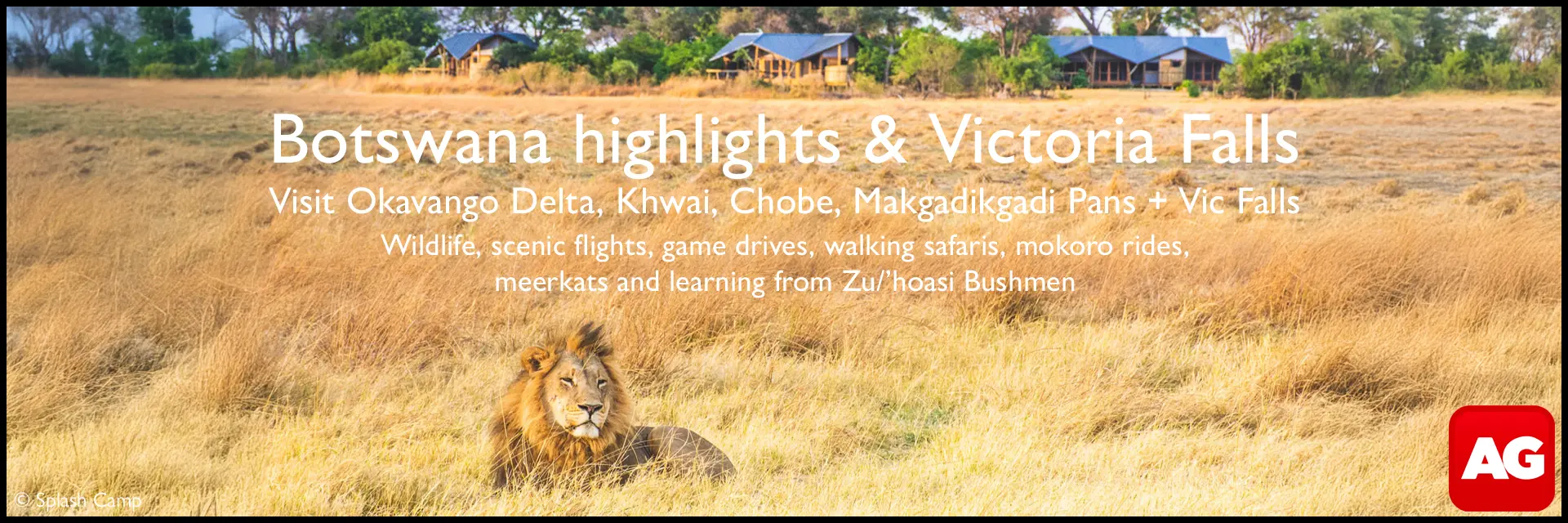
The miombo woodlands of Busanga Plains
Miombo woodland characterises most of Kafue, and as the northern parts of the park receive higher rainfall, the miombo is taller and denser here, frequently dominated by the flat-topped, semi-evergreen Julbernardia paniculata. A journey by road to Busanga Plains will find you weaving your way through these woodlands before finally reaching the open plains. Once on the plains, the far treeline is just a shadow on the horizon, with the sky seeming to reach down to touch the earth in every direction you look. In the undulating grasses on either side of the track, pockets of lechwe, puku and buffalo graze while fish eagles’ calls reverberate from the treetops.
Another notable attribute listed by Ramsar is that Busanga Plains is home to a large baobab tree of heritage value. The tree is known by the locals as Mukondakamwale, and is believed to have enclosed three girls (maidens) who sought refuge when it was raining.
 Find out about Busanga Plains for your next African safari. We have ready-made safaris to choose from, or ask us to build one just for you.
Find out about Busanga Plains for your next African safari. We have ready-made safaris to choose from, or ask us to build one just for you.
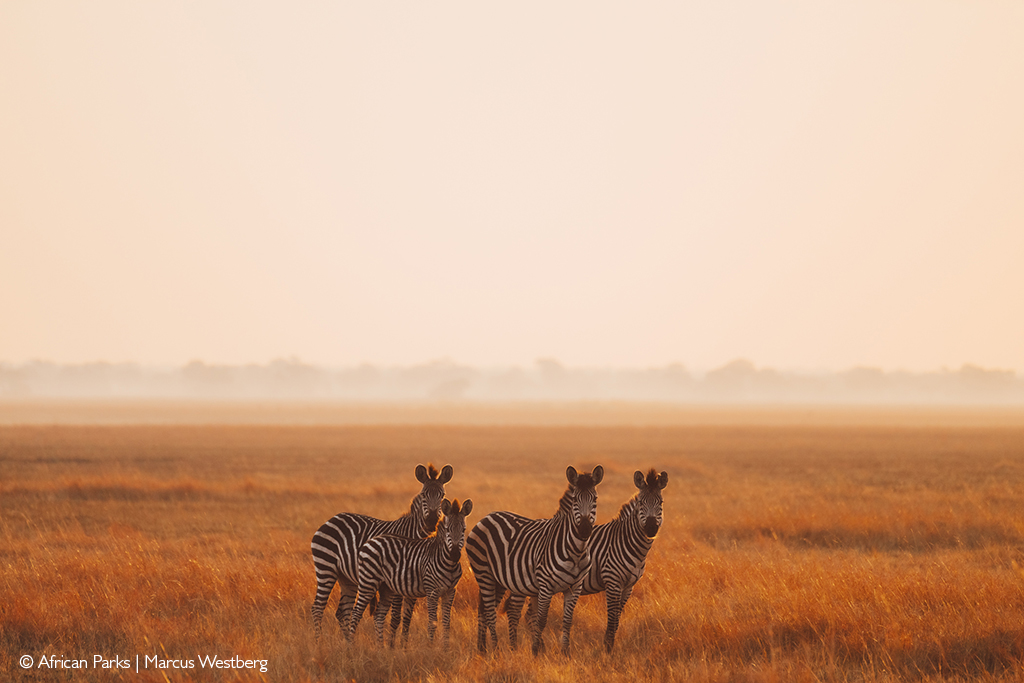
Wildlife of Busanga Plains
Busanga Plains is best known for red lechwe, puku and the shy, swamp-dwelling sitatunga. Fifty years ago, lechwe were almost extinct in the area. But numbers have increased enormously since the establishment of the national park, and the sight of huge herds of red lechwe wandering across the golden plains and splashing through the shallow waters is breathtaking.
Other antelope found here are blue wildebeest, Lichtenstein’s hartebeest, defassa waterbuck, impala, the secretive reedbuck and the diminutive oribi – possibly the daintiest and prettiest of them all. Roan antelope are regularly seen, as are herds of sable, sometimes up to 40 strong. Buffalo and zebra are also frequently spotted on the plains. Bushpigs and warthogs also inhabit the plains, almost seeming to prance about on tip-toe. The water channels of the plains also shelter plenty of hippos and catfish.
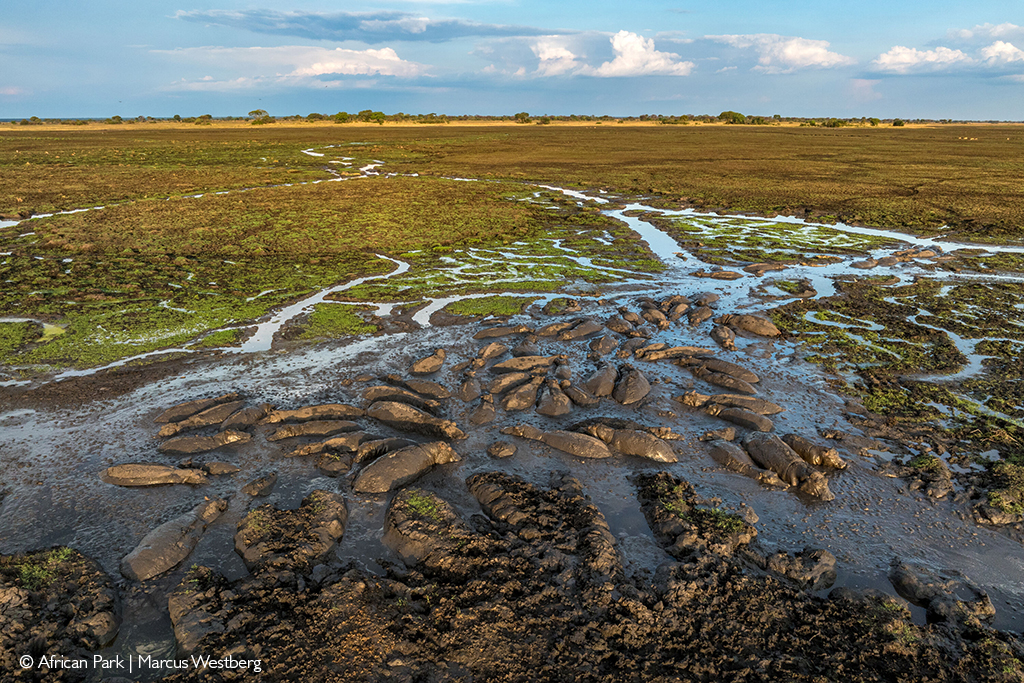
Of course, abundant prey brings an abundance of predators. Sizeable prides of lions, including imposing black-maned males, thrive on the game-rich plains. It is here that lions, that usually dislike getting wet, can often be seen chasing lechwe through the water, even where it’s more than half a metre deep. Since 2005, Kafue, together with South Luangwa National Park, has been regarded as a lion ‘conservation unit’, and it’s not uncommon to see lion prides of up to twenty in number. In fact, estimates suggest there are more lions here than there are beds for travellers!
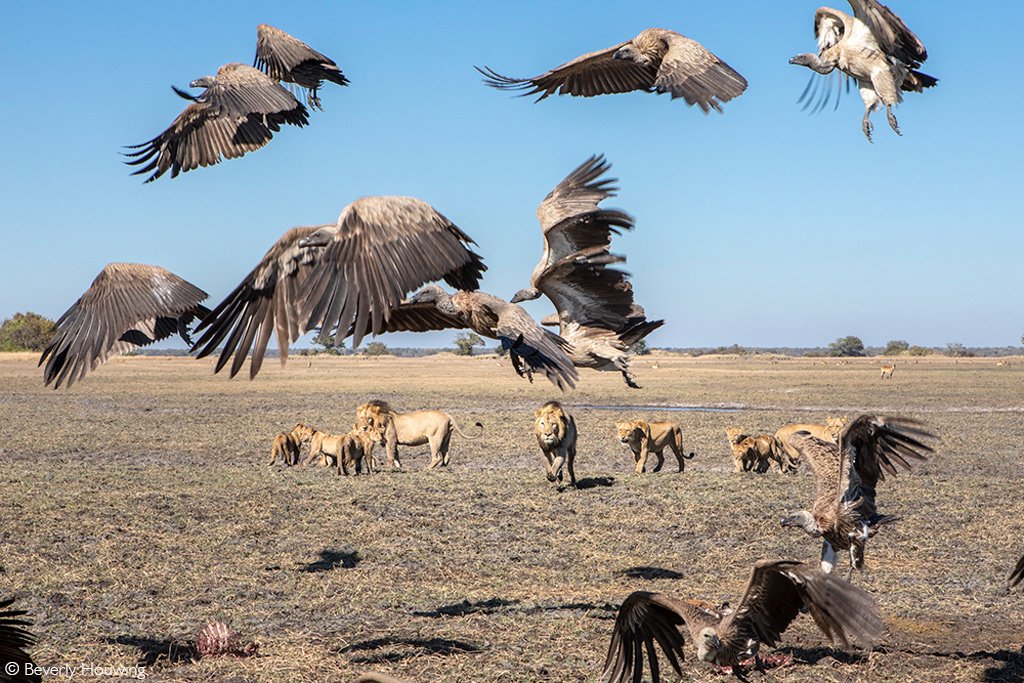
Lions share Busanga Plains with leopard, spotted hyena and wild dogs. The leopards tend to favour the tree-line on the edge of the plains. This is also one of the few places in Zambia where you can see cheetahs, which thrive in the wide open areas. Other carnivores include side-striped jackal, serval, caracal, civet and African wild cat, as well as Selous’ mongoose, white-tailed mongoose, marsh mongoose, honey badger, African clawless otter and spotted-necked otter.
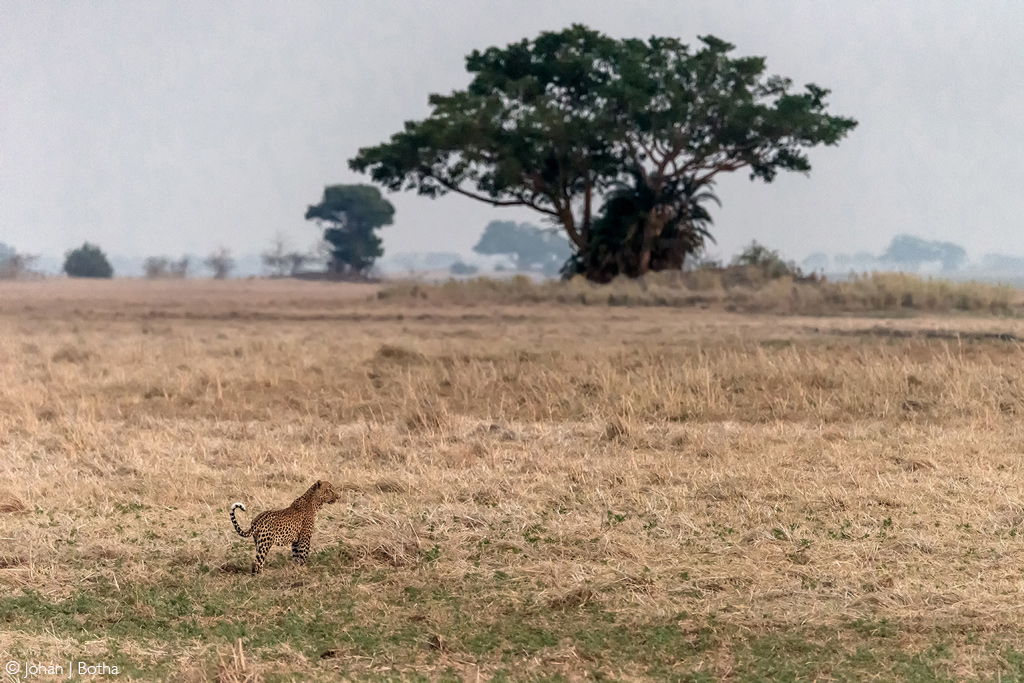
Busanga Plains’ birdlife
The entirety of Kafue National Park is designated an Important Bird Area by BirdLife International, with over 450 bird species found in the Busanga Plains alone. Chaplin’s barbet, Zambia’s only endemic bird, as well as endangered wattled cranes and grey crowned cranes, all find sanctuary here. Busanga Plains is one of only a handful of known wattled crane breeding sites. Summer migrants include lesser kestrel and Montagu’s harrier, while Ross’ turaco and black-backed barbet are some of Busanga’s ‘specials’. Small termite mounds attract sooty chats. In the wetter areas of the plains, rosy-throated longclaws are found, while the woodlands are home to African hawk-eagles, black-chested snake-eagles, racket-tailed rollers, black-cheeked lovebirds, flocks of helmetshrikes, and sooty and Arnot’s chats. Secretary birds, Böhm’s bee-eaters, paradise flycatchers and sunbirds are abundant.
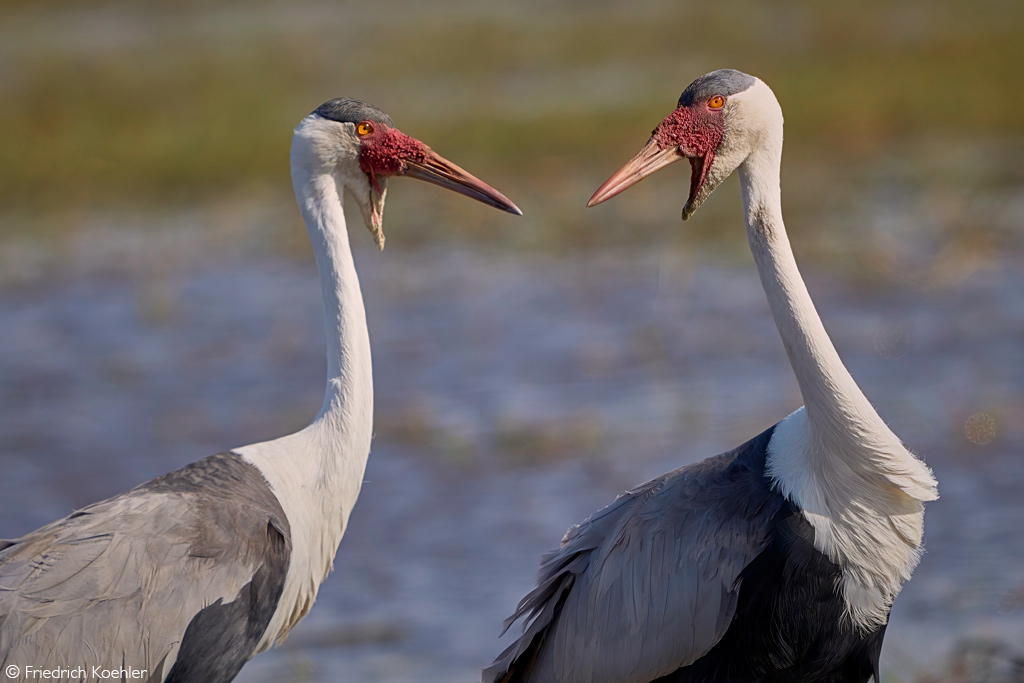
The swamps are home to a variety of waterbirds and birding along the channels is spectacular. Collared pratincoles, lesser jacanas and squacco herons abound, as do African spoonbill, and yellow-billed, open-billed and saddle-billed storks. Knob-billed and white-faced whistling ducks are plentiful, as are wattled and blacksmith lapwings. Add flocks of pelicans, every egret you can think of and purple herons to the mix, as well as Pel’s fishing owl, African finfoot, and numerous kingfisher species.
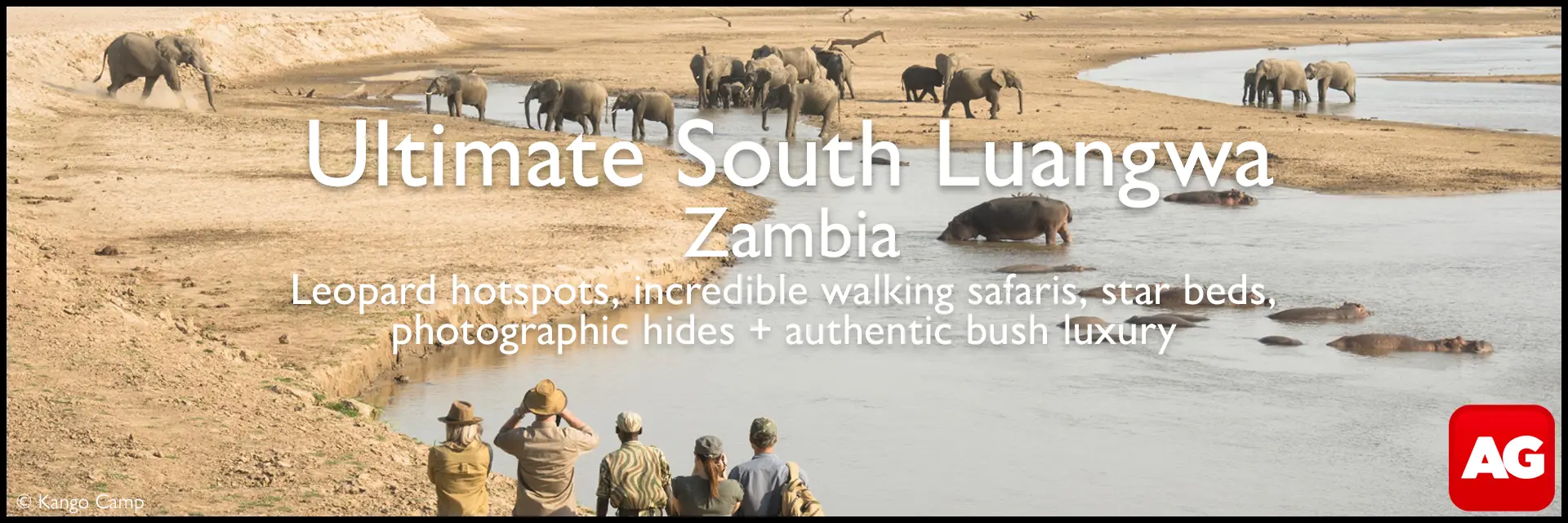
Fishing and history
Kafue National Park was founded as a protected area in the 1920s, before being formally gazetted as a national park in the 1950s. When establishing the park, the government relocated the traditional owners from their villages to the town of Mumbwa, outside the park boundaries. As these villages had been dependent on fishing for generations, they came to an agreement where they retained seasonal fishing rights within the park. During the fishing season, it is, therefore, not uncommon to see fishermen on foot, preparing and manning their fish traps in the channels of Busanga Plains.
Conserving Busanga Plains
Lack of funding over the years had hampered the management of Kafue National Park, allowing poaching, human encroachment and charcoal production to take their toll on both landscape and wildlife. In addition, many illegal tourism camps were built. In 2022, Zambia’s Department of National Parks and Wildlife (DNPW) signed an agreement with NGO African Parks for a 20-year management partnership agreement.
Since 2022, aerial surveys and collaring programmes have shown a growing elephant population, along with an encouraging increase in populations of species such as buffalo, puku, sable and hartebeest. The park has also experienced a 196% increase in tourism revenue, providing an opportunity to deliver critically needed revenue, as well as providing employment and other benefits to local communities. Hundreds of jobs have been created, the park’s rangers and law enforcement teams intensively retrained, and a community education programme established. All of this, and its status as a Ramsar site, translates into better conservation efforts for Busanga Plains.
 DID YOU KNOW that African Parks offers safari lodges and campsites where 100% of tourism revenue goes to conservation and local communities? You can view and book accommodation in selected African Parks destinations here.
DID YOU KNOW that African Parks offers safari lodges and campsites where 100% of tourism revenue goes to conservation and local communities? You can view and book accommodation in selected African Parks destinations here.
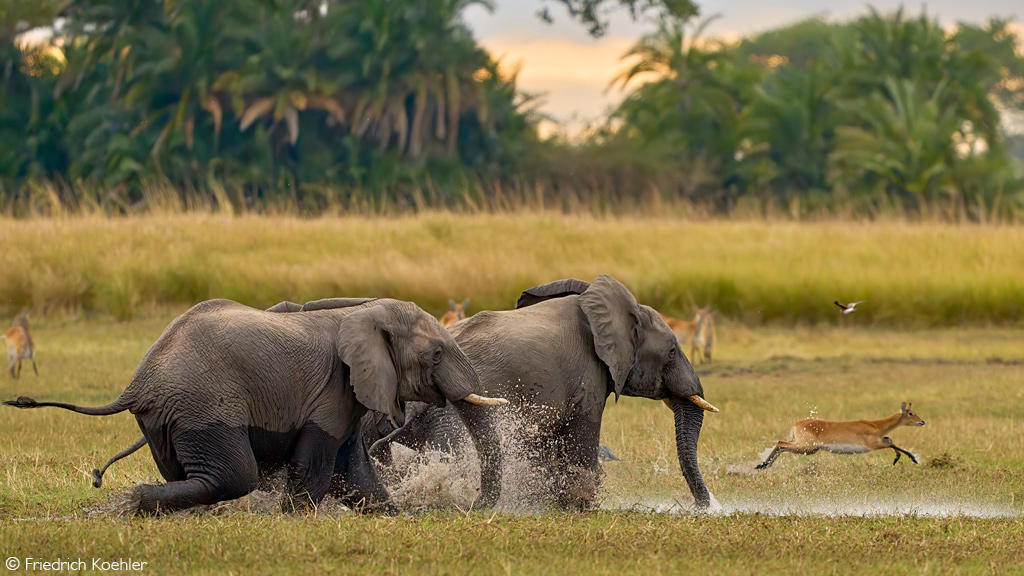
Explore and stay in Busanga Plains
Busanga Plains is not particularly easy to get to, even by four-wheel drive. If attempting the journey by road, tortuous turns, protruding branches, and a pitted dirt track are the order of the day.
The Busanga Plains are seasonal, and are only accessible between April and October when the floods have receded enough to allow for road transport. But those four months offer some of the best wildlife viewing in Southern Africa, with thousands of red lechwe and puku assembling along the receding water channels.
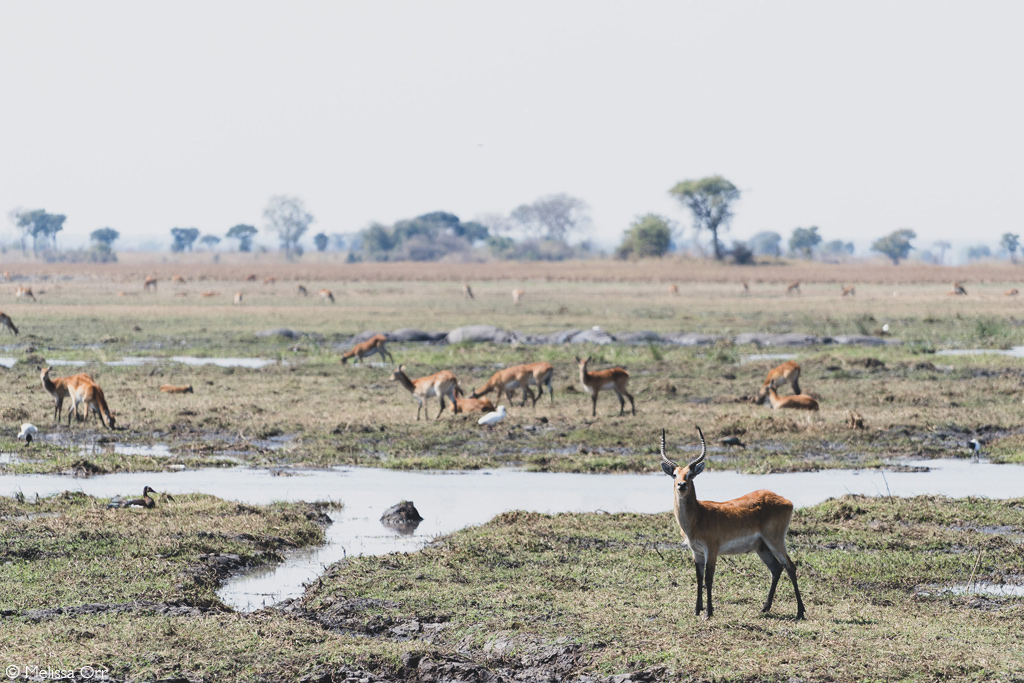
From June to early August, much of the floodplain and the main channels are still full of water. From August to October the Plains drain and dry out, until they are tinder dry again. July – October is usually the best time to visit.
This is not a place where one just pops in for a night or two, the distances here are great, but with a decent budget and some time on your hands, Busanga Plains is definitely worth exploring.
There are a number of bush camps and tented camps on offer in and around Busanga Plains, with many luxury options on offer. Most overlook the plains and offer exceptional experiences in immersing oneself in all they have to offer. See our Busanga Plains packages here.
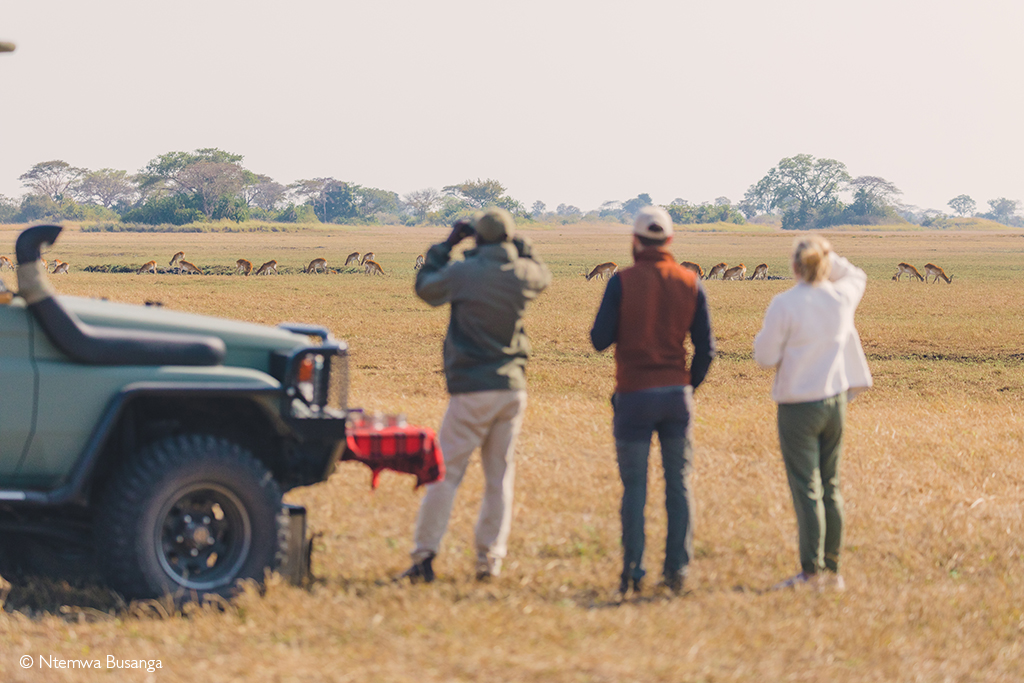

Final thoughts
Busanga is breathtaking, secluded and special. Uncluttered horizons, endless grassy plains, thousands of antelope and swamp-dwelling lions. Raw and off the beaten track, Busanga delivers, and with small visitor numbers, there’s a good chance you’ll have the place almost to yourself, with perhaps just one or two other game-viewing vehicles on the plains.
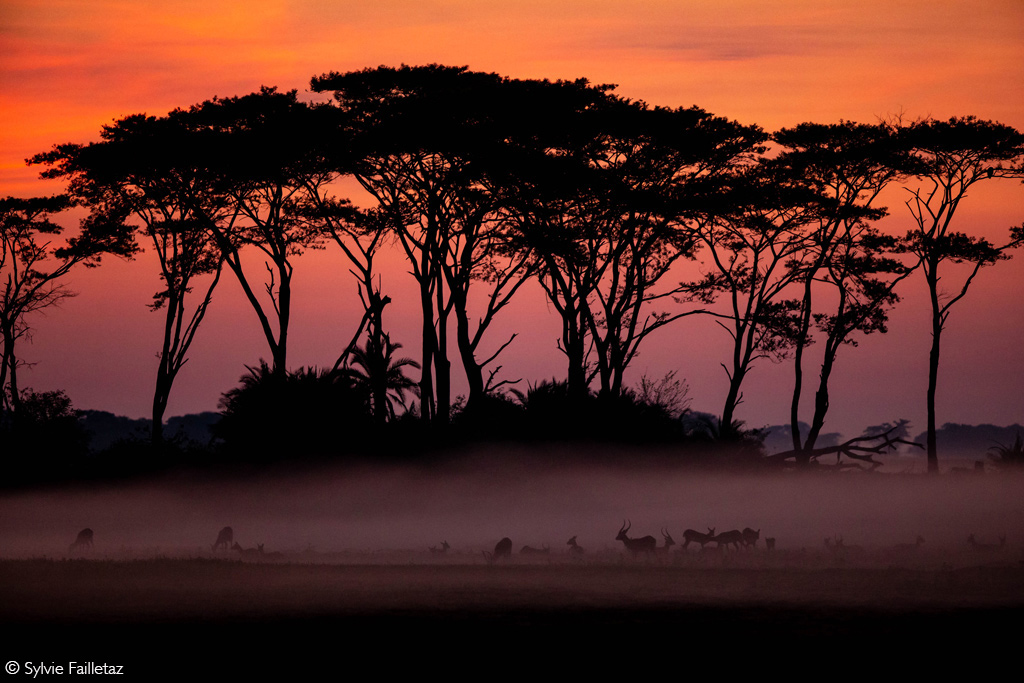
Further reading
- Kafue National Park is Zambia’s oldest and largest national park – known for sweeping plains and wetlands, and abundant and unique wildlife. Read more about Kafue National Park here
- Busanga Plains, Kafue, is brimming with wildlife, yet not overwhelmed by tourists. Read Irene Amiet’s travel diary from this Zambian safari spot. Read more about Busanga Plains, the jewel of Kafue here
- This travel diary to Busanga Plains in Kafue National Park (Zambia) will have you contacting Africa Geographic to arrange your next safari. Read the travel diary here
- Kingsley Holgate & his Afrika Odyssey expedition team are connecting 22 parks managed by African Parks. Read about their trip to Kafue NP. Read more about the Afrika Odyssey Expedition to Kafue here
To comment on this story: Login (or sign up) to our app here - it's a troll-free safe place 🙂.![]()


